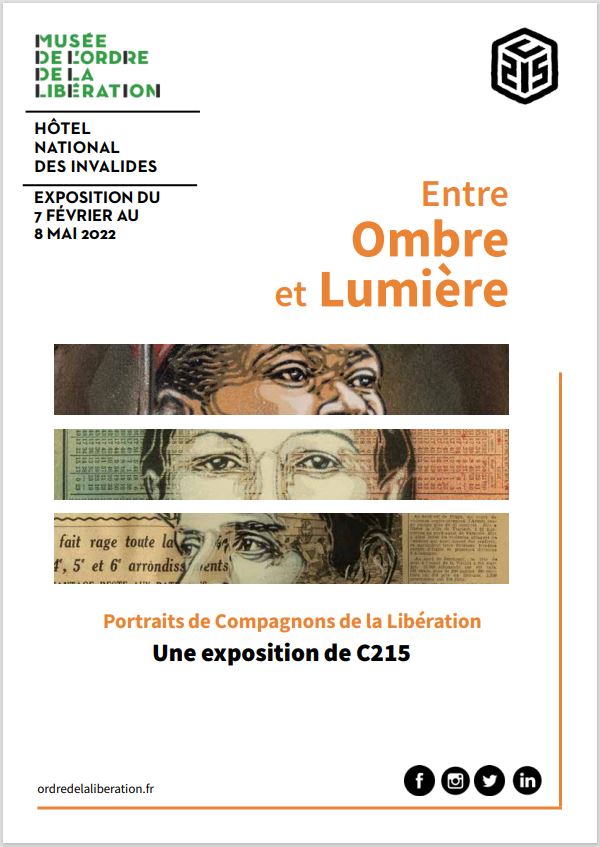- Exhibition
- Starts: 07/02/2022 9:00 am
- Ends: 08/05/2022 12:00 am
- https://www.ordredelaliberation.fr/fr/entre-ombre-et-lumiere
[!! Exhibition is in French!!]
What were their intentions? Why did they get involved? What emotions carried them away?
These questions emerge as soon as we take the time to look into their eyes and come into contact with their faces. Could they then come to life to share with us their struggle in hiding, in the African desert or in the skies over England? Applied to everyday objects from the war years – radio sets, newspapers, cameras, gaiters or bowls – the artist’s mixed technique makes these men and women with exceptional backgrounds familiar to us. It is this closeness that awakens our interest in this or that figure and that edifies us by bringing them from the shadows into the light.
In order to reach out to all audiences, C215 has painted these same portraits of Compagnons on street furniture in the Invalides district. A link chosen by the artist as a bridge between the outside and the inside. Visitors are invited to continue discovering these works in the 7th arrondissement and to ask themselves questions about the civic values embodied by these representatives of the “Army of Shadows”.
WHO IS C215?
A portrait artist born in 1973, Christian Guémy, alias C215, works with self-made stencils and spray cans. He plays on the contrasts of light and shadow to give a sharpness to the looks that respond to the intensity of the subjects’ commitments.
C215’s background is steeped in popular, hip hop and classical culture. To which is added the family heritage of a mother who draws portraits with meticulousness. This combination has led him to street art and to the representation of important personalities in history. After paying tribute to the illustrious figures in the Pantheon and the fighters of the Great War at the Legion of Honour Museum, the artist turned to the Order of the Liberation and its members, the Companions of the Liberation. He represents sometimes very famous Resistance fighters such as Jean Moulin, Winston Churchill or Romain Gary, but also gives a face to those whose features have remained more confidential, such as Marcelle Henry, Dominique Kosseyo or Olivier Harty de Pierrebourg.
It is of course a contrast to see urban art enter this solemn place, just as it is a surprise for the inhabitant to discover the features of a Companion on a letterbox. This inscription in everyday life is one of the artist’s marks to reach the public and question it. Why and how to fight against the unacceptable? What does freedom really mean? What place in our society for these examples of heroic lives?

